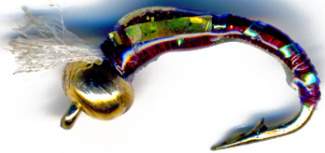Roll Casting 1
 This new series of fly fishing tutorials is about roll casting. Roll casts use a different form of back cast. It’s not actually a back cast at all, but rather a circular motion cast that changes the line’s direction. Instead of employing being a straight line, roll casts use a tensioned curved loop of line. This line is called the “D loop”. Don't stop the rod on the cast because the line will fall and tension will be lost. Roll casts include the Spey and Underhand techniques (we’ve addressed the Spey in earlier postings). These casting methods are particularly good for river and salmon fishing with two handed rods.
This new series of fly fishing tutorials is about roll casting. Roll casts use a different form of back cast. It’s not actually a back cast at all, but rather a circular motion cast that changes the line’s direction. Instead of employing being a straight line, roll casts use a tensioned curved loop of line. This line is called the “D loop”. Don't stop the rod on the cast because the line will fall and tension will be lost. Roll casts include the Spey and Underhand techniques (we’ve addressed the Spey in earlier postings). These casting methods are particularly good for river and salmon fishing with two handed rods.
The roll cast can only be done if the back cast forms a smooth curved loop. The line should have minimal contact with the water. At the same time the you need to make a perfect loop in mid air, which ensures an efficient power stroke at the moment the line connects with the water. During this cast, the rod does not stop. It is loaded at all times and changes direction and speed. As the cast is made the tip of the rod "turns" as the cast is made and the "D" loop formed. Don’t allow any slack in the loop when you make the forward cast. You can make a simple roll cast by dropping a stationary loop of line onto the water’s surface from the rod tip. This is a great way to cast a short distance, or straighten line in preparation for a longer cast.
This is a great basic fly fishing technique, and critical for your armoury.



















